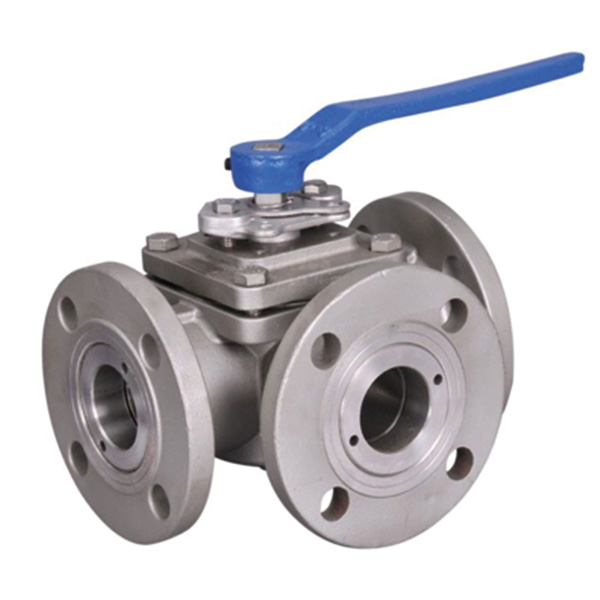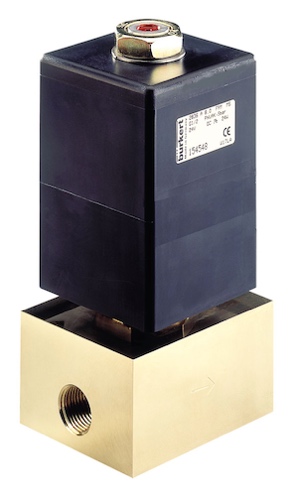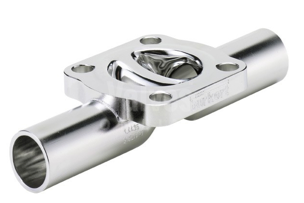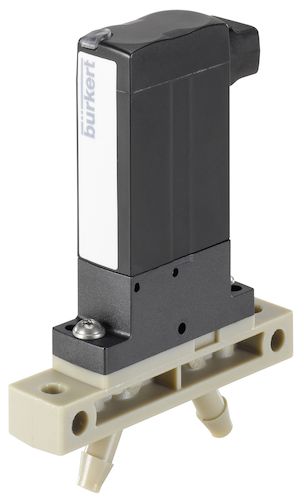
What is the difference between solenoid valves and ball valves?
When looking for the correct valve for your application, you have a wide variety of options to choose from. The range of valves on offer can sometimes be confusing, but figuring out exactly what you need your valve to do narrows down your choices. Do you need a solenoid valve or a ball valve, and what’s the difference? What is a solenoid valve used for? Continue reading our helpful guide to find out everything you need to know.
What is a solenoid valve used for?
Solenoid valves are used to open, close, and mix media in an application where the valve has to be electrically driven. The main use of solenoid valves is to make processes more efficient. They’re at the heart of many modern applications because they can be programmed easily to switch processes on or off without much human input.
So, how do they work? A solenoid valve has two components: a solenoid and a valve body. The solenoid has a coil around an iron core at its centre which is called a plunger. The coil creates a magnetic field when current passes through the solenoid. This produces a magnetic attraction with the plunger, moving it.
Solenoid valves can be split into two categories: “General Purpose” and “Pneumatic”. A pneumatic solenoid valve is used to drive compressed air into an actuator or cylinder which, in turn, would open and close a bigger valve, such as a ball valve.
A general purpose solenoid valve can be used for other types of media, provided the materials of construction, pressure and temperature are compatible. A solenoid valve for this use would generally not be any larger than DN50 (2”). Around this size it might be beneficial to compare the use of a solenoid valve versus a pneumatically actuated ball valve. If, for example, you have a small line at a location where there is not compressed air available, you might want to consider using a solenoid valve which would only require an electrical signal to open or close, over a pneumatically actuated ball valve, which would require both an electrical signal and compressed air to drive the actuator.
Depending on the type, solenoid valves can use very little power; a servo-assisted solenoid valve can utilise the pressure in the line to assist with opening the valve and can operate with a coil that doesn’t draw much power. A direct acting solenoid valve, which relies on the power of the coil to open the valve and can open with zero line pressure, can turn out to be a costly option which draws a lot of power, especially when you get to bigger sizes. Smaller sizes, however, are reliable and compact.
What is a ball valve and how is it used?
A ball valve is a popular valve type used within many industries. It’s a shut-off valve that manages flow measurement and the control of liquids, vapours and gases into a piping system by rotating the ball inside.
The ball is mounted against two seats in a shaft that connects to a control mechanism which rotates the ball. When the handle is parallel to the pipe, the flow is open and allows fluid through from the valve. When it’s perpendicular to the pipe, fluid is prevented from flowing.
Ball valves work extremely well in applications that involve large volumes of flow. For example, farmers will use ball valves to water large areas of the farm. Buildings with fire suppression systems also rely on ball valves for opening and closing sprinkler heads.
Solenoid valve vs ball valve
So, what is the difference between solenoid valves and ball valves?
A solenoid valve’s main purpose is to make processes more efficient. Pneumatic solenoid valves are chosen for many modern systems because they’re easily programmable to turn processes on or off without human interference. With the growing use of automation within production industries, solenoid valves are extremely popular for their ease of use.
They’re also simple to install and can be positioned in remote and inaccessible locations to be activated electronically.
Ball valves, on the other hand, can be operated by hand, electrically or pneumatically actuated. Generally a pneumatically actuated ball valve is driven by a pneumatic solenoid valve. An actuated ball valve should be considered over a solenoid valve where the line size is DN25 or bigger, but ultimately the choice is down to the preference of the engineer.
Solenoid valves require power to open, close and maintain their position, which can occasionally lead to a heat build-up in the coil. However, Burkert’s range of 6519 solenoid valves are 100% duty rated for continuous operation, which can mean these issues are avoided if using it as a pilot valve for a ball valve
The other option to compare a ball valve with a solenoid valve is to use an electric actuator. At smaller sizes it would be more beneficial to use a solenoid valve which is more compact and cost-effective.
One benefit of electrically actuated ball valves is their ability to work at a high flow rate, but a drawback of a motorised valve is that it is much slower than a solenoid valve. Also, while solenoid valves can be repaired fairly easily, a problem within a ball valve is much more serious and can render the valve useless because the ball cannot be easily replaced.
Summary
Choosing the correct valve depends entirely on the needs of your application. Now you know the uses of a solenoid valve and the pros and cons of ball valves, you’re in a better position to make a more informed decision.
Solenoid valves and ball valves at BM Engineering
BM Engineering offers a variety of solenoid valves from industry-leading manufacturer, Bürkert.
Bürkert solenoid valves from BM Engineering are applicable for a wide variety of functions, such as general on/off control and process control systems, to name but a few. As with our other valve types, all of the solenoid-operated valves we stock are designed to provide industrial applications based in Scotland and the wider UK with a high-performance flow control solution.
Here at BM Engineering Supplies, we primarily stock two types of solenoid valves: pneumatic and general-purpose solenoid valves. We also stock durable and reliable ball valves.
If you’d like to know more about the valves we stock, don’t hesitate to contact us today on 0141 762 0657 or email us at sales@bmengineering.co.uk.



